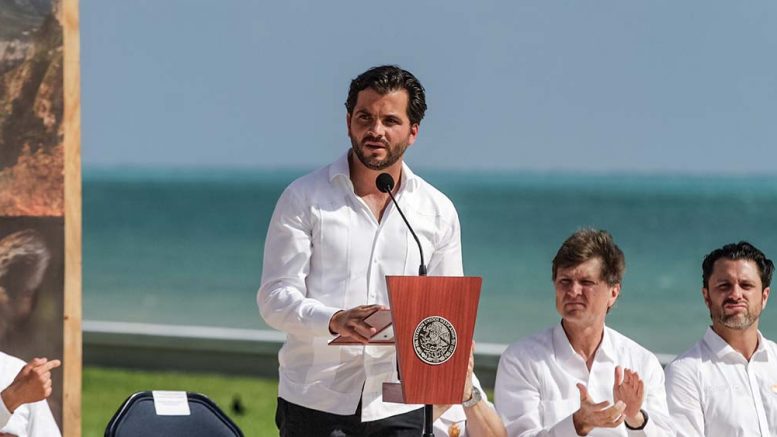The Mexican Environmental Authority has given Argonaut Gold (TSX: AR) a lump of coal for Christmas.
The regulatory body known as Semarnat has denied approval of Argonaut’s environmental impact assessment (EIA) for its San Antonio gold project in Baja California Sur, Mexico.
Peter Dougherty, Argonaut Gold’s president and CEO, declined a request for an interview, but in a press release stated that he was “disappointed” with the ruling, and that management would “review the factors that led to this decision and determine a path to move this project forward.”
He also described San Antonio as “one of the best undeveloped projects in the sector,” and said the company’s plan for the project calls for “a modern approach to mining, including cleaning up historical overburden stockpiles and tailings, and working to improve the local aquifer.”
In addition, the company noted that it is “evaluating alternatives, including legal options, the possible resubmittal of a revised EIA and continuing dialogue.”
According to Argonaut’s four-paragraph press statement, Semarnat cited the reasons for not approving the EIA as “requiring additional information regarding potential identification, description and impacts to the environment; additional information on the construction, operation and closure plans for the project; and additional information regarding the impact on the local aquifer.”
The company added that the required information “is readily available,” and that Argonaut “has the ability to respond swiftly.”
Brian Quast, an analyst at BMO Capital Markets, noted that the decision was “slightly negative” because he ascribes only “minimal value” to the project.
“Deliberations with [Semarnat] have been ongoing for an extended period of time, calling into doubt the status of the project,” he said in a brief research note.
Permitting issues at the project arose as early as August 2012, when San Antonio’s EIA was denied due in part to a local zoning issue, the company says. Argonaut then filed a federal lawsuit stating that the local zoning plan was not validly constituted, and therefore should not have been an obstacle to permitting the project.
Earlier this year the federal appeals court ruled that the current Urban Development Plan for the Municipality of La Paz (zoning plan) was not properly established and therefore should not have been used as a criteria in the EIA review for the project.
The court’s ruling, announced in July, also instructed Semarnat to annul the denial of the EIA and issue a decision without considering the zoning plan.
San Antonio is 8 km north of the historic mining town of San Antonio, 40 km southeast of the port city of La Paz, and 160 km north of Cabo San Lucas.
It is situated in the lower transitional foothills leading to the Sierra de la Laguna range.
According to a technical report completed on the project in October 2012, “a portion of the Sierra de la Laguna range has been designated by the United Nations Educational, Scientific and Cultural Organization (Unesco) as a global biosphere reserve. The project site is located 18 km from the biosphere buffer zone, and in a completely separate hydrographic basin from the biosphere reserve.”
The project has four known gold deposits — Los Planes, Intermediate, Las Colinas and La Colpa — in addition to a number of exploration targets.
The project is made up of 165 mineral concessions spanning 463 square kilometres.
San Antonio is envisioned as a heap-leach operation with four open pits.
As of December 2015, the project’s measured and indicated resource was 65 million tonnes averaging 0.83 gram gold per tonne for 1.7 million contained oz. gold. Inferred resources stood at 6 million tonnes grading 0.34 gram gold for 67,000 contained oz. gold.
The project has an initial capex of US$88 million, a one-and-a-half year payback and an after-tax net present value of US$219 million (at a 5% discount rate and at US$1,200 per oz. gold). Cash costs are an estimated US$549 per oz. gold.
At a production rate of 4 million tonnes per day, San Antonio would have a 15-year mine life. The company has also looked at a 6-million-tonne-per-day run rate.
Semarnat’s decision on the EIA sent Argonaut Gold’s shares down 18%, or 35.5¢, to $1.65 apiece, on 2.7 million shares traded.
Over the last year the company’s shares have traded in a high and low range of 78¢ in January and $4.45 in July.
As of Sept. 30, the company had $50 million in cash and $1 million in debt (including equipment leases). It also had a $30-million undrawn revolving credit facility.


Be the first to comment on "Mexican gov’t denies permit for Argonaut’s San Antonio"